|
|
| |
| Padma Perfumery Works Replenish your senses! |
| Rose Incense |
White Musk Incense |
Al Oudh Incense |
Sheik Al Arab Blue |
Jasmine Incense |
|
|
|
|
|
 |
 |
 |
 |
 |
|
|
|
Juniper Incense
 Juniper incense are made from the Juniper trees which are found in highlands of some part of the earth like Bhutan, Tibet, etc. Juniper incense sticks are traditionally made, have very pleasant fragrance, smoke very less, and are very good for concentration. Due to these qualities, the Juniper incense and Juniper incense sticks are highly demanded across the globe. Junipers are coniferous trees in the genus Juniperus and hail from the cypress family of Cupressaceae. There are more than 50 species in this genus, which occur almost throughout the world in different shapes, sizes and colors.
Juniper incense are made from the Juniper trees which are found in highlands of some part of the earth like Bhutan, Tibet, etc. Juniper incense sticks are traditionally made, have very pleasant fragrance, smoke very less, and are very good for concentration. Due to these qualities, the Juniper incense and Juniper incense sticks are highly demanded across the globe. Junipers are coniferous trees in the genus Juniperus and hail from the cypress family of Cupressaceae. There are more than 50 species in this genus, which occur almost throughout the world in different shapes, sizes and colors.
Junipers are either deciduous or evergreen and range in size from low bushy shrubs to small trees which may grow upto 50 meters in height. There also exist some species, which appear as flat or mound, low growing ground covers. Junipers have two types of leaves; some species and their seedling posses needle like leaves, 5-20 mm long, while some have scaly leaves which are around 2-4mm long. The foliage can vary in color from silvery gray, to mauve and purple, bronze and gold, to any shade of green. Some extant species even display a wondrous array of foliage, even on the same tree. Although most Junipers are dioecious there exist some species which are monoecious. The dieoecious plants depend upon birds and animals to disperse their seeds. The female plant of most Junipers bear fleshy fruits which are orange to brownish red or even blue in color and volatile oil, flavonoid glycosides, limonene, protein, fiber, calcium, and iron. The oil secreted from these berries is used as a flavoring agent and also to treat a lot of ailments as well, that is why Juniper incense sticks are also used in aromatherapy to treat some deseases.
Although Junipers well-drained soil, they are tolerant to almost all soil types and hence exist in over a dozen ecosystems. However, dense shade or wet boggy conditions causes the plant to become thing or in some cases not survive at all. The most common disease of Junipers is Phomopsis blight caused by the fungus Phomopsis juniperovora. The fungus starts by tainting the foliage then spreads to the stem tissue causing the end branches to become brown. This ofcourse can be prevented by weeding out the infected seedlings and spraying them with fungicide such as Benomyl at an interval of 7-10 days.
Uses of Juniper
Apart from making incene, incense sticks and other incense products the Junipers are widely used in landscaping and horticulture due to their tolerance to varied soil conditions and variation in size and colors. They are cultivated widely as ground covers, hedges, screens or windbreaks. The berries are used as spice and to flavor gin, Jenever and sahti-style of beers. Juniper berries have long been used to cure many ailments and boost physical stamina. The oil extracted from these berries are used extensively to treat arthritis, diabetes, cystitis, urethritis and malfunctioning of the urinary tract and Gastrointestinal System. Juniper oil is also used as an natural essence in the production of incense, perfumes and cosmetics.
Feel free to contact us to buy or for any information on Juniper incense, Juniper incense sticks and other Juniper incense products.
|
|
|




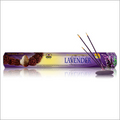
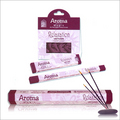
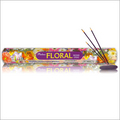
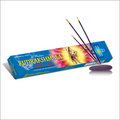
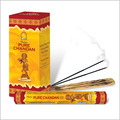
 Juniper incense are made from the Juniper trees which are found in highlands of some part of the earth like Bhutan, Tibet, etc. Juniper incense sticks are traditionally made, have very pleasant fragrance, smoke very less, and are very good for concentration. Due to these qualities, the Juniper incense and Juniper incense sticks are highly demanded across the globe. Junipers are coniferous trees in the genus Juniperus and hail from the cypress family of Cupressaceae. There are more than 50 species in this genus, which occur almost throughout the world in different shapes, sizes and colors.
Juniper incense are made from the Juniper trees which are found in highlands of some part of the earth like Bhutan, Tibet, etc. Juniper incense sticks are traditionally made, have very pleasant fragrance, smoke very less, and are very good for concentration. Due to these qualities, the Juniper incense and Juniper incense sticks are highly demanded across the globe. Junipers are coniferous trees in the genus Juniperus and hail from the cypress family of Cupressaceae. There are more than 50 species in this genus, which occur almost throughout the world in different shapes, sizes and colors.